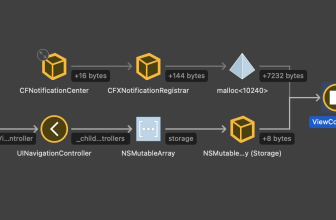Definition “Execution environment” What is a runtime environment?
An execution environment, English Runtime Environment, is elementary for the operation of a software application. The term describes the conditions under which computer programs are executed in a runtime system.
Company about the topic
 A runtime environment provides an application with the components required at runtime.
A runtime environment provides an application with the components required at runtime.
Immediately after starting a program, this is transferred to the runtime, one also speaks of the runtime. The program transmits commands to the processor and gets access to the MEMORY. When writing programs, however, they are initially in a restricted workflow environment. This makes it easier for programmers to track the programs and their activities during runtime, to catalog them and to eliminate any errors.
Even a crash does not bring the recording to a halt in this case, because the associated runtime environment, RTE for short, continues to run and could collect information about the process and bugs. Users often only learn that programs use a runtime environment when a runtime error occurs.
Runtime Environments in daily computer operations
Many computer programs that are used on the computer every day (or at least have been used for a long time) also rely on runtime environments. This includes apps such as the Microsoft PowerPoint Viewer or the plug-in Adobe Flash.
The respective runtime environment allows you to open the respective file formats without a special program in the app you are currently using. This means that the execution environment opens up a digital ecosystem and offers you more compatibility and functionality without having to constantly change applications.
Even if the requirements for runtime environments in use become quite complex, you should understand the basic functions in order to be able to grasp the concept of RTE better. Basics in RTEs include writing and reading files, sending over networks, data management, sorting and search functions, and control of input and output devices.
A runtime environment not only makes the operation of specialized programs easier, but also guarantees outstaffing platform independence. For example, Java applets work independently of the operating system and the browser used, Windows programs on Linux and Unix computers can be run with RTEs, and older 32-bit programs can still work on 64 – bit systems due to an isolated runtime environment.
Runtime environments thus help to ensure stability, system independence and backward compatibility in everyday life. Because each programming language uses its own execution model, most programs also use a dedicated runtime environment in which they outsource at least parts of the model.
Even stand-alone models like Pthreads have a runtime system that implements the behavior of the execution model. The Runtime System is the gateway to the runtime environment and thus also allows access to hardware such as keyboards or DVD drives.
Change of the RTE term
The classic definition of what exactly is technically hidden behind an RTE is only conditionally correct today. Generally, it is not wrong to describe the definition of runtime Environment as a collection of resources such as CPU power, RAM, and resources in the operating system, but this can only be considered partially correct.
Runtime environments in the traditional sense were often based on a specific hardware that was needed, modern runtime environments are no longer so strongly tied to this. This means that a newer RTE may simply be a virtual setup, not a physical one. Resources can be moved immediately.
(ID:46835543)












